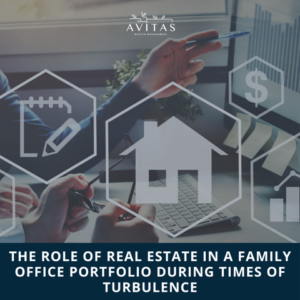 Family offices are no strangers when it comes to bricks and mortar, and real estate truly is a staple asset class in many family office portfolios. What’s more, is that it’s even where many family offices originated, in the case of in-house in real estate companies. What is it about real estate, though, and its enduring love story with family offices?
Family offices are no strangers when it comes to bricks and mortar, and real estate truly is a staple asset class in many family office portfolios. What’s more, is that it’s even where many family offices originated, in the case of in-house in real estate companies. What is it about real estate, though, and its enduring love story with family offices?
At face value, the ecosystem of real estate and family offices can be roughly divided into two major camps. Those invested – oftentimes this is where a family office is linked to the real estate company – and those who are not. The second group could include tech entrepreneurs or simply other family offices that haven’t yet had the opportunity to get into the real estate space.
As with family offices themselves, there is no one-size-fits-all approach to real estate. And their level of interest and involvement can also vary depending on their familiarity with the asset class, as well as what their goals are (beyond just financial). There’s an on-ramp to real estate for everyone, it’s just a case of finding the best one for you and the data strongly suggests this. New wealth owners, such as tech entrepreneurs, who have never been exposed to this traditional asset class and might not be as familiar with the lexicon of real estate will likely approach it in one way. Whereas, next-generation owners who want to make a difference through real estate on a social and environmental level, will view it from a completely different angle. Lastly, anyone else with an interest in property, who would like to have a more structured view from a strategic asset allocation perspective, will bring various views to the table when exploring real estate.
The key trends in real estate for family offices, according to data from the Simple Family Office Real Estate Review:
Traditional subclasses and the rise of non-traditional subclasses.
Real estate is typically divided into four traditional subclasses: residential, commercial, industrial, and undeveloped land. In addition to these traditional subclasses, student housing, medical facilities and assisted living communities are considered non-traditional classes and are gathering increasing attention from large investors, including family offices. Real estate investors and funds typically identify strategies within these categories, but these growing non-traditional subclasses call for a non-traditional approach.
Megatrends: Where is the world going and will real estate follow or lead the way?
Digital disruption, the climate crisis and demographic shifts are just some of the six megatrends influencing the world and there’s no ignoring these – as desirable as that might be.
When considering property investments, it’s vital to take a broad view of these societal megatrends. Where is the world economy going? What will society look like in ten, twenty-five, or fifty years? How and where will people choose to live and work? While real estate has historically been viewed as a safe bet, these megatrends suggest this might not always be the case going forward.
The primary real estate strategies
The four primary ways for family offices to gain exposure to real estate are direct investments, funds, co-investments, and real estate investment trusts (REITs). Each investment vehicle has distinct pros and cons and it’s interesting to see how family offices weigh these up in various ways in relation to their interest in real estate.
ESG and its role in real estate
As more wealth owners put their money to good use, family offices continue to increase their commitments to creating lasting legacies and many are doing so via their real estate investments. Could real estate be one of the clearest avenues for family offices to directly impact the environment and society through their investments?
Despite recent global turbulence, it doesn’t look like real estate is falling out of favour anytime soon. At the end of the day, most property retains value in a way distinct from equities and other less-tangible assets. But like all investment decisions, real estate requires distinct knowledge and expertise, of which there are many avenues to go down.
See the full article here.
By Francis Botha, Contributor at Forbes
Published November 2, 2022
